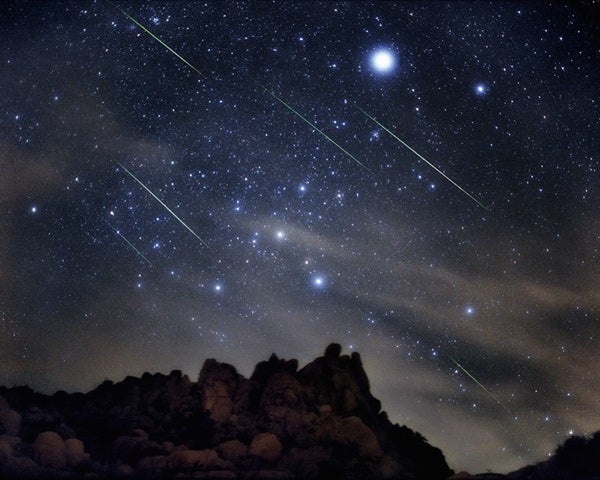Meteors (the streak of light you see) are indeed caused by particles that are much smaller than most people expect! These particles, most of which are thought to be a mixture of ice and dust, are called meteoroids. The majority of meteors you see are caused by meteoroids only as big as a grain of sugar or a pea; the very brightest (fireballs) are produced by meteoroids about the size of a golf ball.
You are right to think that speed plays a role in how bright the streak of light is. The amount of light produced is a small fraction of the energy produced, which goes as mass times velocity squared. Thus, if a meteoroid doubles its mass, it will double its brightness, but if it doubles its speed, it quadruples its brightness. We take this into account when estimating the size or mass of a meteoroid from the light it produces — knowledge of the meteoroid’s speed is very important in this calculation.
The question of materials is a more complicated one. The effect on brightness from the material is minor compared with the energy of the meteoroid; however, it can change the color you notice in the meteor. Different materials ionizing (what happens when the meteoroid burns up) in the atmosphere can cause a meteor to appear in different colors. For example, ionized oxygen appears green, sodium is yellow, and magnesium is blue-white.
All Points Logistics/
NASA Meteoroid Environment Office










